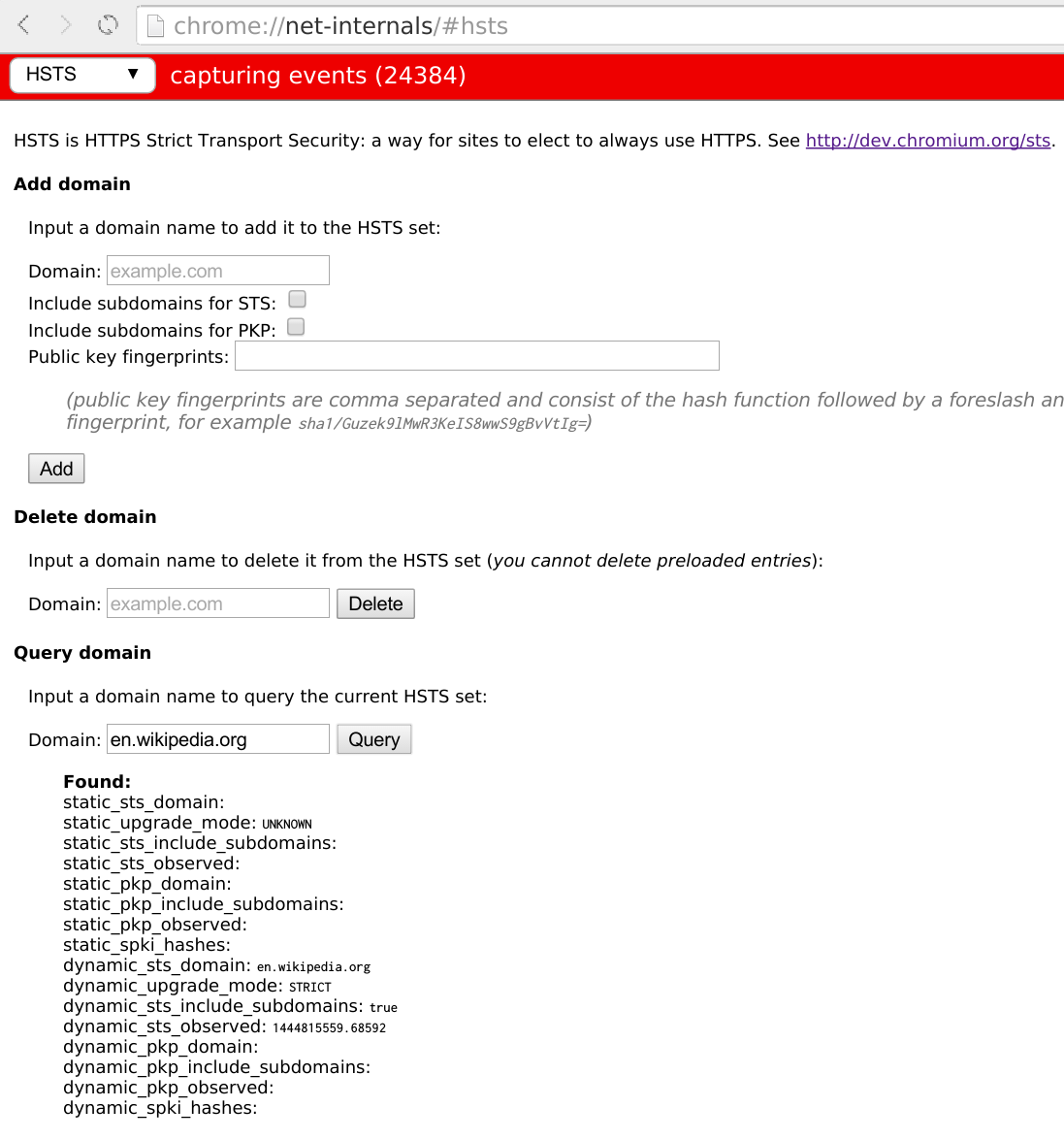|
.app (top-level Domain)
.app is a generic top-level domain (gTLD) in ICANN's New gTLD Program. Google purchased the gTLD in an ICANN Auction of Last Resort in February 2015. The TLD is of interest due to its utility in regards to branding mobile, web, and other applications. History The development of the .app domain name began in 2012 after ICANN announced its "New gTLD Program". The program's goal is to expand the current variety of namespaces by an almost unlimited quantity of new entries. In January 2012 the program received its first applications and in 2013 first serious investment inflow. The first part of the program's domain names were released in late 2014. On 25 February 2015 Google won the ICANN Auction of Last Resort for the .app gTLD, via their Charleston Road Registry Inc. company, paying US$25 million. Google opened public registration of the domain in May 2018. Use and purpose The name "app" is a short form of the word ''application'' often used in the IT sector. This domain name is ... [...More Info...] [...Related Items...] OR: [Wikipedia] [Google] [Baidu] [Amazon] |
Application Software
Application software is any computer program that is intended for end-user use not operating, administering or programming the computer. An application (app, application program, software application) is any program that can be categorized as application software. Common types of applications include word processor, media player and accounting software. The term ''application software'' refers to all applications collectively and can be used to differentiate from system and utility software. Applications may be bundled with the computer and its system software or published separately. Applications may be proprietary or open-source. The short term ''app'' (coined in 1981 or earlier) became popular with the 2008 introduction of the iOS App Store, to refer to applications for mobile devices such as smartphones and tablets. Later, with introduction of the Mac App Store (in 2010) and Windows Store (in 2011), the term was extended in popular use to include desktop a ... [...More Info...] [...Related Items...] OR: [Wikipedia] [Google] [Baidu] [Amazon] |
Google Registry
Charleston Road Registry Inc. (CRR), doing business as Google Registry, is a wholly owned subsidiary of Google LLC. It is the domain name registry that Google uses to handle its top-level domains (TLDs). History The company was founded on February 8, 2012 due to requirements by ICANN that domain name registries and registrars be separate legal entities. CRR owns 46 TLDs: * .ads * .android * .app * .boo * .cal * .channel * .chrome * .dad * .day * .dclk * .dev * .docs * .drive * .eat * .esq * .fly * .foo * .gbiz * .gle * .gmail * .goog * .google * .guge * .hangout * .here * .how * .ing * .map * .meet * .meme * .mov * .new * .nexus * .page * .phd * .play * .prod * .prof * .rsvp * .search * .soy * .youtube * .zip * .みんな * .グーグル * .谷歌 See also * List of Internet top-level domains This list of Internet top-level domains (TLD) contains top-level domains, which are those domains in the DNS root zone of the Domain Name System of the Internet. A list ... [...More Info...] [...Related Items...] OR: [Wikipedia] [Google] [Baidu] [Amazon] |
Generic Top-level Domain
Generic top-level domains (gTLDs) are one of the categories of top-level domains (TLDs) maintained by the Internet Assigned Numbers Authority (IANA) for use in the Domain Name System of the Internet. A top-level domain is the last level of every fully qualified domain name. They are called generic for historical reasons; initially, they were contrasted with country-specific TLDs in RFC 920. The core group of generic top-level domains consists of the .com, com, .net, net, .org, org, .biz, biz, and .info, info domains. In addition, the domains .name, name and .pro, pro are also considered ''generic''; however, these are designated as ''restricted'', because registrations within them require proof of eligibility within the guidelines set for each. Historically, the group of generic top-level domains included domains created in the early development of the domain name system, that are now sponsored by designated agencies or organizations and are restricted to specific types of re ... [...More Info...] [...Related Items...] OR: [Wikipedia] [Google] [Baidu] [Amazon] |
ICANN
The Internet Corporation for Assigned Names and Numbers (ICANN ) is a global multistakeholder group and nonprofit organization headquartered in the United States responsible for coordinating the maintenance and procedures of several databases related to the namespaces and numerical spaces of the Internet, ensuring the Internet's stable and secure operation. ICANN performs the actual technical maintenance work of the Central Internet Address pools and DNS root zone registries pursuant to the Internet Assigned Numbers Authority (IANA) function contract. The contract regarding the IANA stewardship functions between ICANN and the National Telecommunications and Information Administration (NTIA) of the United States Department of Commerce ended on October 1, 2016, formally transitioning the functions to the global multistakeholder community. Much of its work has concerned the Internet's global Domain Name System (DNS), including policy development for internationalizatio ... [...More Info...] [...Related Items...] OR: [Wikipedia] [Google] [Baidu] [Amazon] |
Google
Google LLC (, ) is an American multinational corporation and technology company focusing on online advertising, search engine technology, cloud computing, computer software, quantum computing, e-commerce, consumer electronics, and artificial intelligence (AI). It has been referred to as "the most powerful company in the world" by the BBC and is one of the world's List of most valuable brands, most valuable brands. Google's parent company, Alphabet Inc., is one of the five Big Tech companies alongside Amazon (company), Amazon, Apple Inc., Apple, Meta Platforms, Meta, and Microsoft. Google was founded on September 4, 1998, by American computer scientists Larry Page and Sergey Brin. Together, they own about 14% of its publicly listed shares and control 56% of its stockholder voting power through super-voting stock. The company went public company, public via an initial public offering (IPO) in 2004. In 2015, Google was reorganized as a wholly owned subsidiary of Alphabet Inc. Go ... [...More Info...] [...Related Items...] OR: [Wikipedia] [Google] [Baidu] [Amazon] |
Mobile App
A mobile application or app is a computer program or software application designed to run on a mobile device such as a smartphone, phone, tablet computer, tablet, or smartwatch, watch. Mobile applications often stand in contrast to desktop applications which are designed to run on desktop computers, and web applications which run in mobile web browsers rather than directly on the mobile device. Apps were originally intended for productivity assistance such as email, calendar, and contact databases, but the public demand for apps caused rapid expansion into other areas such as mobile games, factory automation, GPS and location-based services, order-tracking, and ticket purchases, so that there are now millions of apps available. Many apps require Internet access. Apps are generally downloaded from app stores, which are a type of digital distribution platforms. The term "app", short for "Application software, application", has since become very popular; in 2010, it was listed as " ... [...More Info...] [...Related Items...] OR: [Wikipedia] [Google] [Baidu] [Amazon] |
Web Application
A web application (or web app) is application software that is created with web technologies and runs via a web browser. Web applications emerged during the late 1990s and allowed for the server to dynamically build a response to the request, in contrast to static web pages. Web applications are commonly distributed via a web server. There are several different tier systems that web applications use to communicate between the web browsers, the client interface, and server data. Each system has its own uses as they function in different ways. However, there are many security risks that developers must be aware of during development; proper measures to protect user data are vital. Web applications are often constructed with the use of a web application framework. Single-page applications (SPAs) and progressive web apps (PWAs) are two architectural approaches to creating web applications that provide a user experience similar to native apps, including features such as smoo ... [...More Info...] [...Related Items...] OR: [Wikipedia] [Google] [Baidu] [Amazon] |
App (computing)
Application software is any computer program that is intended for end-user use not computer operator, operating, system administration, administering or computer programming, programming the computer. An application (app, application program, software application) is any program that can be categorized as application software. Common types of applications include word processor, Media player (software), media player and accounting software. The term ''application software'' refers to all applications collectively and can be used to differentiate from system software, system and utility software, utility software. Applications may be bundled with the computer and its system software or published separately. Applications may be proprietary software, proprietary or Open-source software, open-source. The short term ''app'' (coined in 1981 or earlier) became popular with the 2008 introduction of the App Store (Apple), iOS App Store, to refer to Mobile app, applications for mobile d ... [...More Info...] [...Related Items...] OR: [Wikipedia] [Google] [Baidu] [Amazon] |
HTTPS
Hypertext Transfer Protocol Secure (HTTPS) is an extension of the Hypertext Transfer Protocol (HTTP). It uses encryption for secure communication over a computer network, and is widely used on the Internet. In HTTPS, the communication protocol is encrypted using Transport Layer Security (TLS) or, formerly, Secure Sockets Layer (SSL). The protocol is therefore also referred to as HTTP over TLS, or HTTP over SSL. The principal motivations for HTTPS are authentication of the accessed website and protection of the privacy and integrity of the exchanged data while it is in transit. It protects against man-in-the-middle attacks, and the bidirectional block cipher encryption of communications between a client and server protects the communications against eavesdropping and tampering. The authentication aspect of HTTPS requires a trusted third party to sign server-side digital certificates. This was historically an expensive operation, which meant fully authenticated HTTPS conn ... [...More Info...] [...Related Items...] OR: [Wikipedia] [Google] [Baidu] [Amazon] |
HTTP Strict Transport Security
HTTP Strict Transport Security (HSTS) is a policy mechanism that helps to protect websites against man-in-the-middle attacks such as protocol downgrade attacks and cookie hijacking. It allows web servers to declare that web browsers (or other complying user agents) should automatically interact with it using only HTTPS connections, which provide Transport Layer Security (TLS/SSL), unlike the insecure HTTP used alone. HSTS is an IETF standards track protocol and is specified in . The HSTS Policy is communicated by the server to the user agent via an HTTP response header field named Strict-Transport-Security. HSTS Policy specifies a period of time during which the user agent should only access the server in a secure fashion. Websites using HSTS often do not accept clear text HTTP, either by rejecting connections over HTTP or systematically redirecting users to HTTPS (though this is not required by the specification). The consequence of this is that a user-agent not capable of do ... [...More Info...] [...Related Items...] OR: [Wikipedia] [Google] [Baidu] [Amazon] |
List Of Internet Top-level Domains
This list of Internet top-level domains (TLD) contains top-level domains, which are those domains in the DNS root zone of the Domain Name System of the Internet. A list of the top-level domains by the Internet Assigned Numbers Authority (IANA) is maintained at the Root Zone Database. IANA also oversees the approval process for new proposed top-level domains for ICANN. As of April 2021, the IANA Root Zone Database listed 1,502 top-level domains, including active, reserved, retired, and special-use domains.Root Zone Database Internet Assigned Numbers Authority. Retrieved April 1, 2021. By March 31, 2025, the number of actively delegated top-level domains had decreased to 1,264, reflecting removals, retirements, and changes in the root zone database. [...More Info...] [...Related Items...] OR: [Wikipedia] [Google] [Baidu] [Amazon] |






